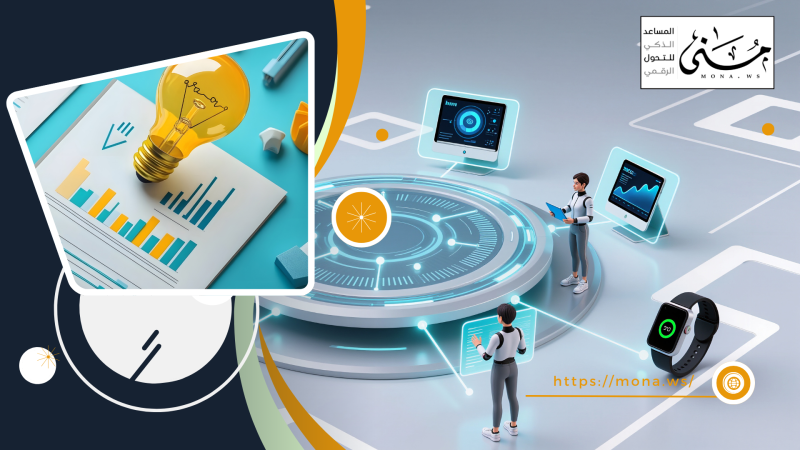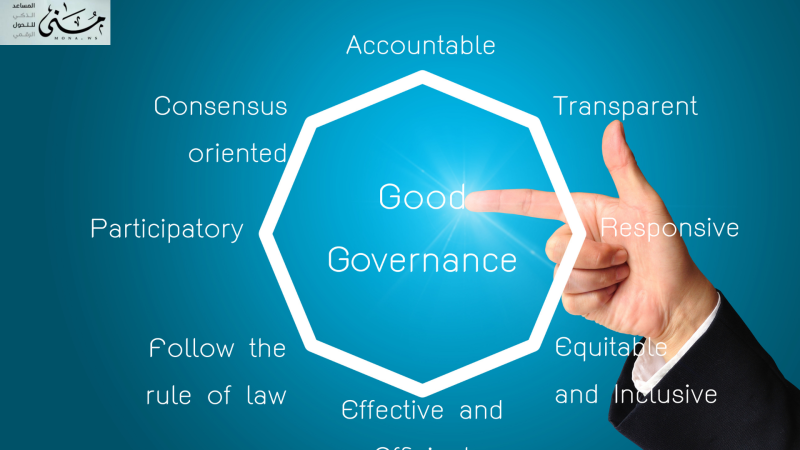Governance characteristics are considered essential factors that contribute to improving performance and achieving goals efficiently and sustainably. In light of current economic and social developments, governance has become the cornerstone for ensuring transparency, justice and effectiveness in the management of institutions.
This article aims to review the most prominent characteristics of governance and how to apply them to enhance trust among all stakeholders and support institutional growth.
Governance characteristics and importance
Governance is one of the basic concepts in managing modern institutions, as it focuses on achieving transparency, ensuring justice, and enhancing accountability to ensure the efficient achievement of strategic objectives. Governance is based on a set of rules and procedures that ensure the efficient flow of work within institutions, which contributes to improving institutional performance and increasing the confidence of investors and stakeholders.
Governance characteristics are one of the main factors that determine the extent of an organization’s success in achieving its goals and providing high-quality services. Governance is characterized by a set of characteristics that make it an effective tool in improving the performance of institutions and ensuring their sustainability.
Among the most prominent characteristics of governance are the following:
Transparency
Transparency is one of the most important characteristics of governance, as it means providing information clearly and accurately to all stakeholders, whether they are investors, employees or regulatory bodies. Transparency ensures that decisions are made based on correct information, which reduces corruption and enhances trust within the organization.
Accountability
Governance is based on the principle of accountability, where every individual in the organization must be responsible for his decisions and performance. Accountability enhances operational efficiency and ensures that everyone adheres to ethical and professional standards.
Justice and equality
Governance ensures that justice is achieved among all stakeholders within the organization, so that each individual obtains his rights based on clear and fair standards. Justice is one of the characteristics of governance that enhances employee loyalty and motivates them to perform better.
Sustainability
One of the most important characteristics of modern governance is the focus on sustainability, as it aims to achieve sustainable growth for the institution while taking into account the environmental, economic and social dimensions, which contributes to achieving a balance between short- and long-term goals.
Participation in decision making
The principle of participation has become one of the most important characteristics of governance, as all stakeholders must be involved in the decision-making process, which enhances employees’ sense of responsibility and leads to more accurate and effective decisions.

The concept of governance has evolved over time.
The concept of governance has evolved significantly over the past decades, initially focusing on internal control in institutions to ensure compliance with laws and regulations. With the development of the digital economy and the increasing complexity of the business environment, governance has become more important in promoting innovation and sustainability.
Today, many organizations rely on modern technologies such as artificial intelligence and advanced analytics to enhance governance, as these tools provide extensive capabilities to monitor performance, analyze data, and make more accurate decisions. Many countries have also developed regulatory frameworks to enhance governance practices, such as the “Vision 2030” initiative in the Kingdom of Saudi Arabia, which aims to improve the performance of government and private institutions by adopting the best global governance practices.
Reliable systems to enhance governance
To achieve strong governance practices, organizations can rely on a number of specialized systems that help improve management and enhance transparency. The most prominent of these systems are:
Electronic Document Management Systems
These systems help organizations document processes and decisions in an organized manner, which contributes to increased transparency and easy access to information.
Enterprise Resource Management Systems (ERM)ERP)
These systems provide advanced tools to monitor financial performance, manage operational processes, and improve administrative efficiency.
Data Analysis and Artificial Intelligence Systems
Many organizations rely on AI to analyze big data and discover patterns that can help improve management decisions and enhance compliance with governance standards.
Risk Management and Compliance Systems
These systems monitor compliance with regulations, analyze potential risks, and help reduce operational and financial risks.
Below is a set of global systems that are used to support and improve “governance characteristics” within organizations:
DocSuite
An integrated document management system that contributes to enhancing transparency and accountability by organizing information and facilitating access to it.
SAP GRC
Comprehensive platform from the companySAP is dedicated to governance, risk and compliance management, helping organizations achieve transparency and effective management of operations.
Oracle GRC
Integrated solution from the companyOracle focuses on providing tools for risk management, governance, and compliance, supporting data-driven decision making.
IBM OpenPages
Advanced platform for risk management, governance and compliance fromIBM helps improve internal control and provide a comprehensive view of organizational performance.
RSA Archer
A global risk and compliance management system that provides integrated solutions for monitoring and analyzing risks, enhancing the application of governance principles.
MetricStream
A platform specialized in governance, risk and compliance management, used to unify regulatory procedures and improve control and transparency in institutions.
Workiva
A cloud-based platform that manages reporting, compliance and governance procedures, providing an integrated environment for review and analysis.
Microsoft SharePoint
Although it is widely used for content management and team collaboration,SharePoint is an important tool in documenting information and implementing governance policies.
Each of these systems offers advanced solutions that contribute to supporting “governance characteristics” by enhancing transparency, improving oversight, and facilitating decision-making processes in line with global governance standards.
The impact of modern technologies on governance characteristics
Modern technologies play a pivotal role in updating and activating governance characteristics within institutions, as these technologies help enhance the basic principles of governance, such as transparency, accountability and justice, through the following mechanisms:
Promote transparency
Electronic document management systems and enterprise resource planning applications (ERP) provides immediate access to financial and administrative information and data, which contributes to showing all procedures and decisions in a clear manner for everyone. This quick and reliable access enhances trust between management and all concerned parties.
Improving accountability
Technologies such as artificial intelligence and data analytics systems help track performance and quickly identify irregularities, helping to monitor the performance of individuals and processes. This accurate tracking enables organizations to hold officials accountable immediately and effectively, thus reducing the chances of errors and violations.
Facilitate decision making
Using digital analytics and artificial intelligence tools, organizations can extract deep insights from large amounts of data. These insights help in making decisions based on accurate and timely information, which enhances the effectiveness of governance and reduces risks.
Promoting sustainability and resilience
Cloud computing technologies and modern digital systems provide organizations’ infrastructures with greater flexibility in managing and storing data, while ensuring business continuity even in the face of challenges. This ensures that governance features such as sustainability are constantly applied and adapt to environmental developments and changes.
The role of governance characteristics in enhancing institutional development
Governance characteristics are considered essential factors that contribute to driving institutional development towards success and sustainability, through the following mechanisms:
Building trust and enhancing transparency
When organizations rely on governance characteristics such as transparency and accountability, this leads to the creation of a reliable and secure work environment. Transparency of information and decisions leads to reducing suspicions and concerns, which enhances the confidence of investors, customers and employees in the organization.
Improving the quality of management and decision making
Organizations that apply governance characteristics rely on clear systems to define responsibilities and procedures, which helps improve the decision-making process. Accountability and accurate oversight contribute to ensuring that the right decisions are made at the right time, which leads to improved organizational performance and reduced financial and operational risks.
Supporting sustainability and growth
Governance characteristics contribute to creating a fair and sustainable regulatory environment, where resources and opportunities are distributed equally. This enables organizations to achieve balanced growth based on strong foundations of innovation and continuous development, thus enhancing their ability to compete in local and global markets.
Attracting investments and stimulating markets
Organizations that effectively implement governance principles often attract more investment, as investors look for business environments with clear and well-established management. This stable environment enhances the opportunities for long-term economic growth and institutional development.
In short, modern-day technologies contribute to activating the characteristics of governance in practical and innovative ways, creating an institutional environment based on trust, transparency and accountability. This environment is the foundation that enables institutions to achieve sustainable development and long-term success.
 تحدد خصائص الحوكمة مدى نجاح المنظمة في تحقيق أهدافها
تحدد خصائص الحوكمة مدى نجاح المنظمة في تحقيق أهدافها










Comments
Add New Comment